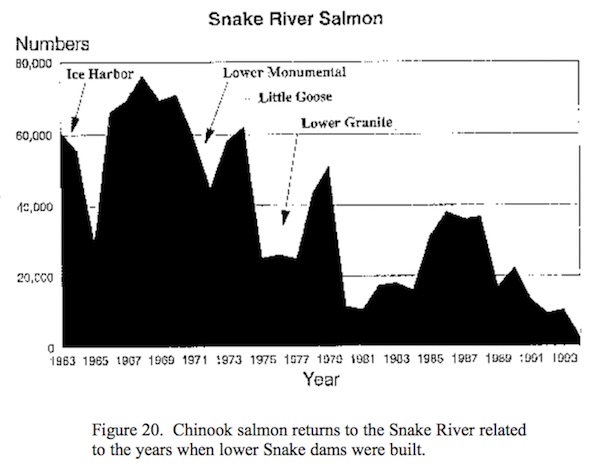forum
library
tutorial
contact

More Reservoirs
Aren't the Answer
by Phil Howell
The Observer, September 16, 2021
|
the film forum library tutorial contact |

|
More Reservoirs
by Phil Howell
|
 The Aug. 21, 2021, editorial "The two languages of climate change" exemplifies the growing trend of faulty conclusions based on selective misinformation and the need for fact checking. It characterizes the Intergovernmental Panel on Climate Change's (IPCC) most recent report as nothing new and quoted a University of Washington atmospheric scientist, Cliff Mass, saying it was "underwhelming" and its message "hyped."
The Aug. 21, 2021, editorial "The two languages of climate change" exemplifies the growing trend of faulty conclusions based on selective misinformation and the need for fact checking. It characterizes the Intergovernmental Panel on Climate Change's (IPCC) most recent report as nothing new and quoted a University of Washington atmospheric scientist, Cliff Mass, saying it was "underwhelming" and its message "hyped."
Mass is noted for his controversial views on climate change and is "an outlier among scientists assessing the impacts of global warming" (Seattle Times, Aug. 3, 2021). So should we believe Mass, or the consensus of hundreds of scientists from throughout the world who contributed to the IPCC's reports and the conclusions of 97% of other scientific publications?
According to the editorial, "scientists such as Mass are most interested in the facts." Hmm. Regardless of whether or what science behind climate change you believe, all you really need for proof is to look at the weather the past several years: the extraordinary heat waves, extended drought, water shortages and increased frequency and intensity of tropical storms.
The editorial is also critical of politicians, like Maria Cantwell, for exaggerating climate change and promoting "drastic measures" in response to the IPCC report. The editorial is correct in stating the new report is not new in terms of documenting climate change. They've been doing that since 1990. What also isn't new is that opposing politicians have chosen to stick their heads in the sand and block efforts to address it.
The editorial scapegoats China (a popular refrain in these days of COVID-19) as the major contributor to climate change since it is the largest producer of CO2. While the U.S. is the second largest producer, we produce 2.4 times as much CO2 per person as China. So we still have a long way to go to shrink our carbon footprint.
The solution to providing more water for irrigation Mass and the editorial advocate is building more reservoirs. However, existing reservoirs have been operating well below capacity for a long time. For example, Colorado River irrigation water from Lake Mead was recently cut off to farmers in the Southwest for the first time because the reservoir is at its lowest level since it was built in the 1930s.
Why should we build more reservoirs when there isn't enough water to fill the ones we have? Reservoirs and the dams that form them are also not without problems. The dams built on the Snake River and tributaries above Hells Canyon eliminated salmon and steelhead runs in all of the upper Snake in Oregon and Idaho, including the Powder, Burnt, Malheur and Owyhee rivers.
Climate change is real, our contribution to it is real, and it's going to take a monumental effort to mitigate. I wholeheartedly agree that we need an honest and thoughtful discussion about what we can do to minimize the causes of climate change and its effects on everyone. But it's likely not going to be a simple fix like more reservoirs.
learn more on topics covered in the film
see the video
read the script
learn the songs
discussion forum
